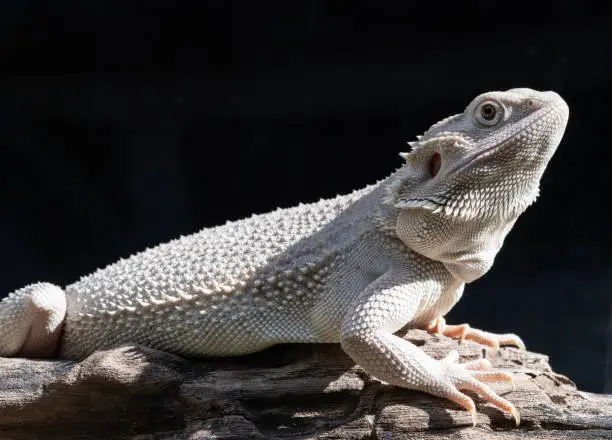Have you ever seen a Bearded Dragon turning white? It’s an unusual but fascinating sight.
Bearded dragons can turn white for a number of reasons, such as excessive heat, shedding, basking, or sleeping.
- The first reason is, Bearded dragons tend to reduce their heat intake when the enclosure becomes too hot.
- It’s also possible that the bearded dragon is shedding, which can cause their head to turn white while their body remains the same.
- Nevertheless, if your bearded dragon turned white and died, it could have been caused by illness or improper care.
So let’s get started and learn more about this process!
Possible Causes Of Bearded Dragons Turning White
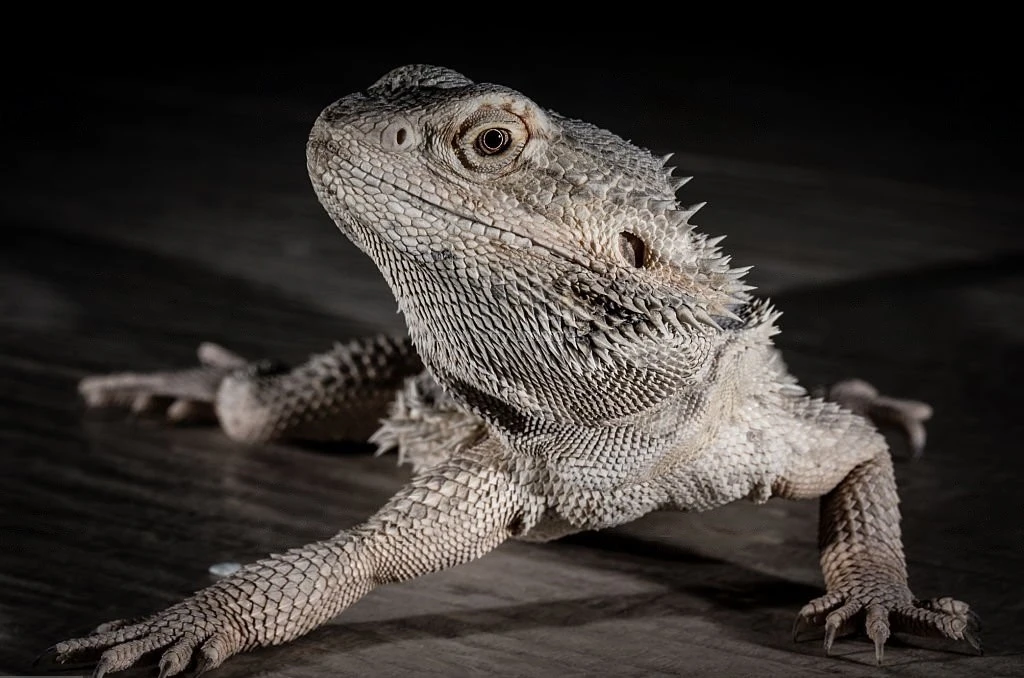
There are several possible causes of a bearded dragon turning white, and it’s important to understand them in order to determine the best course of action for treating your pet.
- One potential cause of turning white could be stress-induced bleaching, which can happen when a beardie gets too hot or cold or feels threatened by its environment. This type of bleaching usually occurs gradually and may take weeks or months before noticeable changes occur.
- Another possible reason is nutritional deficiencies; if your beardie isn’t getting enough vitamins, minerals, or other nutrients from its diet, it could lead to its skin becoming pale and discolored over time.
- Genetics can also play a role in some cases; certain breeds of bearded dragons are more prone to developing lighter coloration than others due to their heritable traits.
No matter what the cause might be, it’s essential that you act quickly and find out exactly what’s going on with your little friend as soon as possible.
Consulting with an experienced reptile vet will help ensure that they get the proper diagnosis and treatment they need!
What You Can Do If Your Bearded Dragon Is Turning White
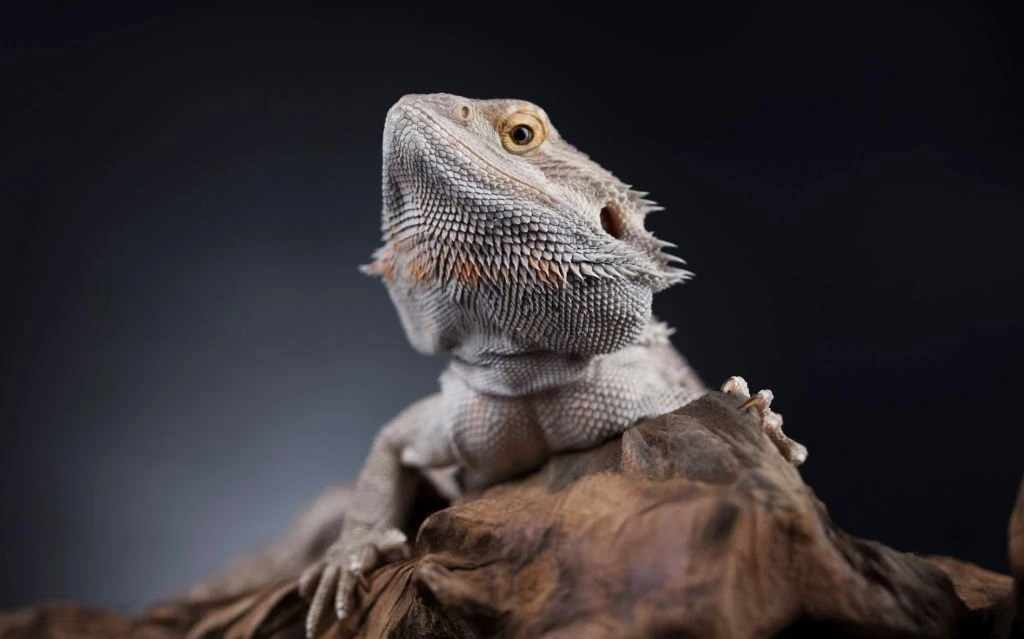
If your bearded dragon is turning white, it could be a sign of something serious. It’s important to pay attention and take action right away in order to ensure that your pet’s health and well-being remain intact.
Here are some steps you can take if your bearded dragon is displaying any signs of whitening:
- Check the environment for possible stressors – Bearded dragons turn white when they experience stress or fear, so check their habitat for things like bright lights or loud noises that could cause distress.
- Monitor temperature levels – Make sure their tank has proper heating and ventilation, as this will help keep them comfortable. If temperatures dip too low, it can lead to a weakened immune system which may result in them turning white.
- Provide adequate nutrition – A healthy diet is essential for keeping a bearded dragon happy and healthy. Feed them high-quality food with lots of vitamins and minerals to support optimal growth and development.
- Visit the vet – Take your pet to see an experienced reptile veterinarian if the problem persists or worsens over time. They’ll be able to diagnose the issue more accurately and provide recommendations on how best to care for your beloved pet going forward.
Taking these proactive steps will give you peace of mind knowing that you’re doing everything within your power to make sure they stay safe, healthy, and vibrant!
Alternative Causes Of Your Bearded Dragon Turning White
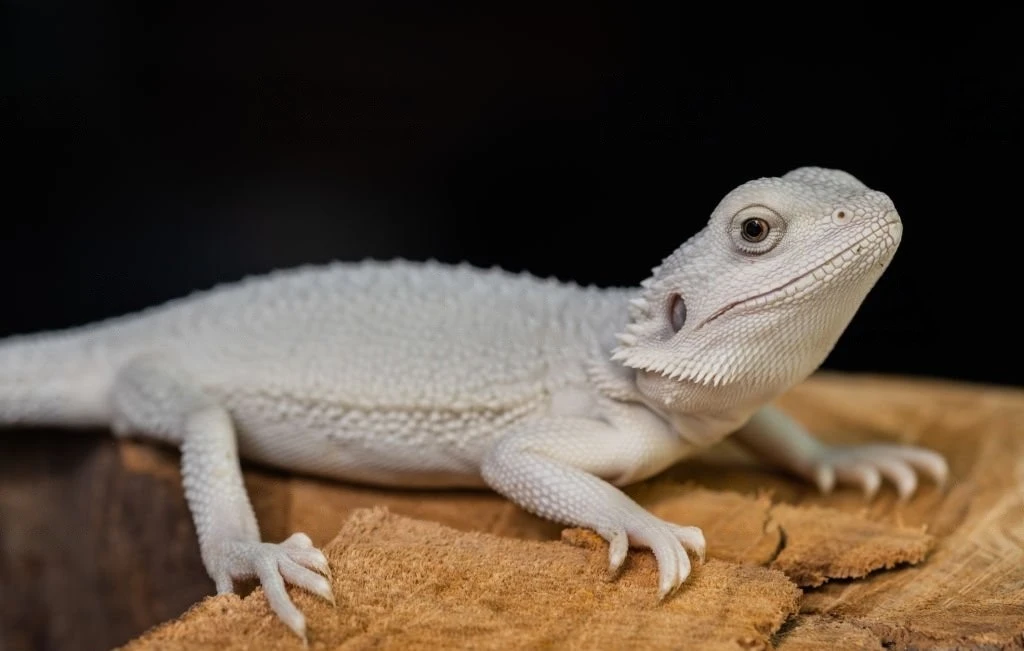
- Infections or illnesses such as metabolic bone disease or vitamin deficiencies can cause your bearded dragon to turn white. If you suspect this may be the case, it’s important to consult with a qualified veterinarian right away. In some cases, if left untreated, these conditions can cause further health complications for your pet.
- Another potential cause could be that your bearded dragon isn’t shedding properly. This happens when the reptile doesn’t shed its skin in one piece and instead sheds small patches at once. Bearded dragons may have bits of old skin clinging to them after they’ve shed; however, if large pieces stay attached for a long time, it may affect their coloration.
If none of these seem like likely explanations for why your bearded dragon has turned white then consider having them examined by a veterinarian just to be sure everything is okay.
They’ll be able to assess any underlying medical issues and provide advice on how best to proceed from there.
More Serious Symptoms Of Your Bearded Dragon Turning White
In the previous section, we discussed some alternative causes for your bearded dragon turning white, which are very similar to the more serious symptoms. Your beloved lizard friend can develop color changes as a result of dehydration, malnutrition, and several other conditions.
| Symptom | Description | Solution |
|---|---|---|
| Dehydration | Your bearded dragon may appear washed out or faded due to not having enough water intake. | Provide fresh water daily and monitor hydration levels regularly. |
| Malnutrition | A lack of proper nutrients such as vitamins and minerals can cause your beardie’s skin to turn white due to nutrient deficiencies. | Feed him nutritious foods like vegetables, fruits, bugs, and worms on a regular basis. |
| Stress/Trauma | If your beardie has been exposed to any kind of stress or trauma it could also be causing their skin to change color. | Reduce stress by creating an environment with plenty of hiding spots and keep handling time to a minimum. |
| Parasites/Infections | Internal parasites or infections can sometimes cause discoloration in the skin which might look like whiteness. | Consult a vet for diagnosis and treatment if necessary. |
When dealing with these issues, it is important to be aware of how they affect bearded dragons so you can take action quickly before things get worse.
Be sure to provide adequate food and water and create a low-stress environment full of hideouts where they feel safe from predators or loud noises that could startle them easily.
Additionally, consult a veterinarian immediately if you detect signs of infection such as mucus buildup around their eyes or mouth area, lesions on their body, or loss of appetite; all of which are common signs of illness in lizards like bearded dragons.
By taking care of these health concerns early on, you will help ensure your pet lives happily for many years!
Bearded Dragon Head Turning Pale Only
It’s not unusual for a bearded dragon to start turning pale, especially around their head.
As they age, their skin coloration can change and become lighter in some areas. Keep an eye on this condition because it could indicate something more serious.
If you notice that your bearded dragon’s head is starting to turn pale, there are a few potential causes you should look into. Common causes include parasites, vitamin or mineral deficiencies, or even poor nutrition.
If these aren’t detected early on, then more severe health problems may arise later down the road. In that case, the first thing to do is take them to the vet for a check-up so any underlying issues can be identified and treated if needed.
It is best to provide your reptile with vegetables and fruits, along with high-quality commercial foods, to prevent it from losing its vibrant coloring around its head. If you wish them to remain strong and healthy throughout their lives, you should also provide UVB lighting and calcium supplements.
With proper care and attention, you can help ensure your beardie stays colorful and happy!
Why Does My Bearded Dragon Have A White Tongue?
My bearded dragon is my companion, the little scaly creature that I take out to roam around and bask in the sun.
And lately, he’s been showing a white tongue—a sign of something amiss. It’s unsettling for me; his bright reptilian eyes seem to search mine as if questioning why this has happened.
The truth is that no one knows exactly what causes the white tongue for sure: some say it could be an infection or a vitamin deficiency due to poor nutrition, while others mention dehydration from not drinking enough water.
Whatever the cause may be, there are ways we can help our beardies stay healthy and combat this issue.
First off, make sure your bearded dragon gets the proper amount of vitamins through their food by feeding them leafy greens such as kale, collard greens, romaine lettuce, and turnip greens every day.
Additionally, adding supplements like calcium powder or multivitamins once a week will also help keep them strong and healthy. Also, ensure they’re getting enough hydration by providing plenty of fresh water daily – misting their enclosure twice per day should suffice!
Finally, making sure their habitat is kept clean and sanitized regularly will prevent any infections from developing in the first place.
These simple steps can go a long way toward keeping our beloved beardies looking good as new and free from any ailments!
Why Does My Bearded Dragon Turn White When Sleeping?
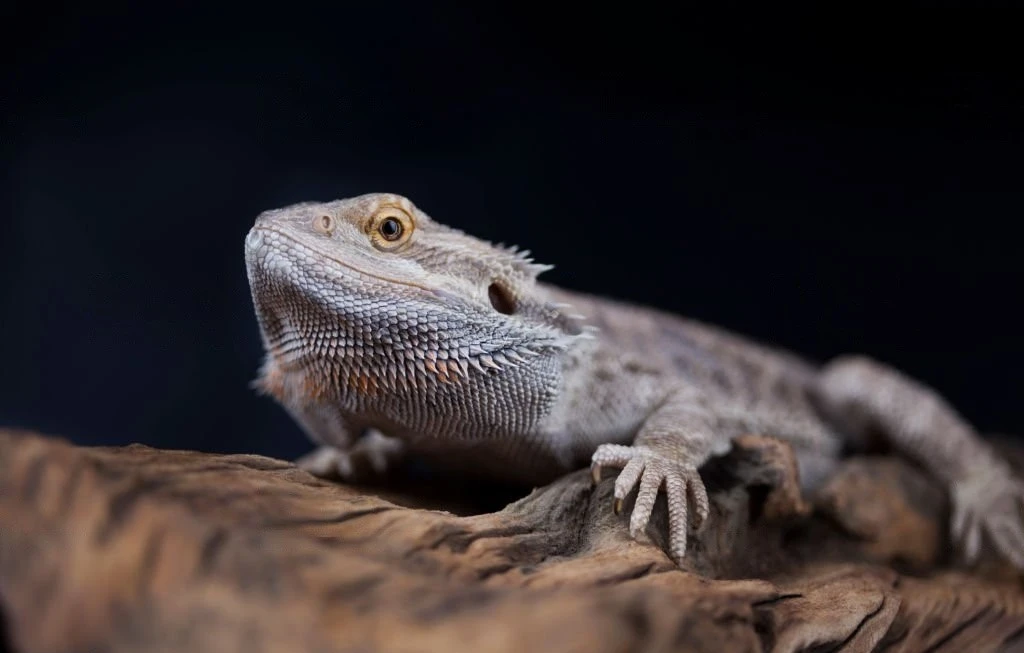
My bearded dragon turns white when sleeping and I’ve always wondered why. It’s a common phenomenon among reptiles, but still, it can be confusing to see your beloved pet change color so drastically.
After some research, I learned that this is due to the reptile’s ability to adapt its body temperature in order to survive. When they sleep or rest, their cold-blooded bodies lower their metabolism which causes them to turn pale – almost white – in order to conserve energy. Camouflage could be another explanation for bearded dragons turning white while resting.
During the time of rest, beardies appear much lighter in color, which may be explained by the special pigments it has evolved that enable them to blend into the environment more effectively. Camouflage helps these animals protect themselves from predators as well as extreme temperatures.
So if you notice your own bearded dragon has become paler than usual during periods of rest, don’t worry – it’s completely normal behavior for these creatures.
With a little understanding of how these lizards work, now we know exactly why our scaly friends turn white when taking a snooze.
Conclusion
The sight of a bearded dragon turning white can be alarming to any reptile owner. It’s important to know the possible causes and what you can do if your pet is affected.
In some cases, it could be something as simple as a change in temperature or diet. However, there are more serious conditions that may require medical intervention.
It’s also helpful to understand why they may have white tongues and why they turn white when sleeping. By doing so, you’ll be better equipped to identify potential problems early on and get them treated before they become severe.
Understanding these phenomena will save you heartache down the line – both emotionally and financially.
Paying close attention to their behavior and environment will help ensure that they stay happy and healthy for many years to come.
